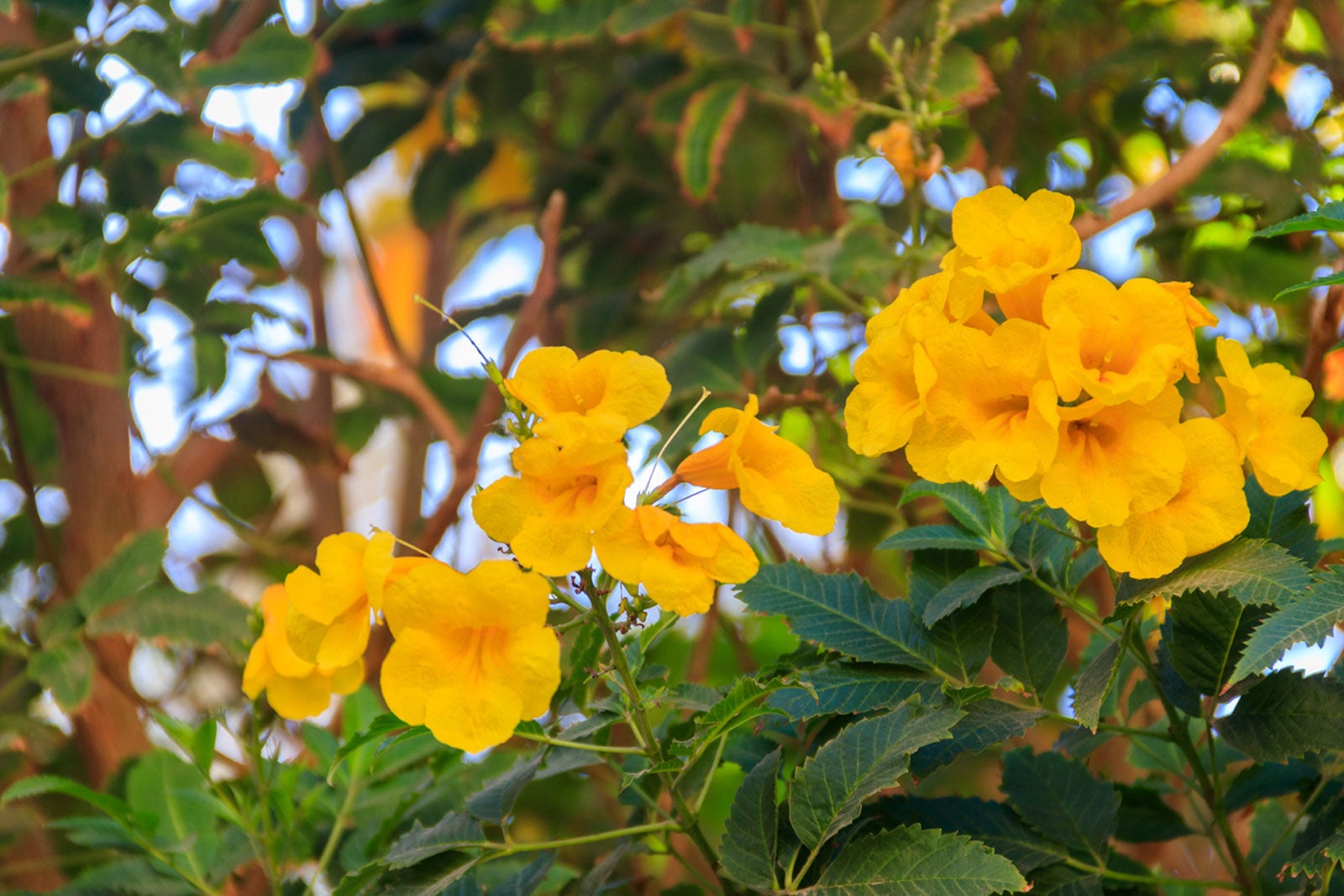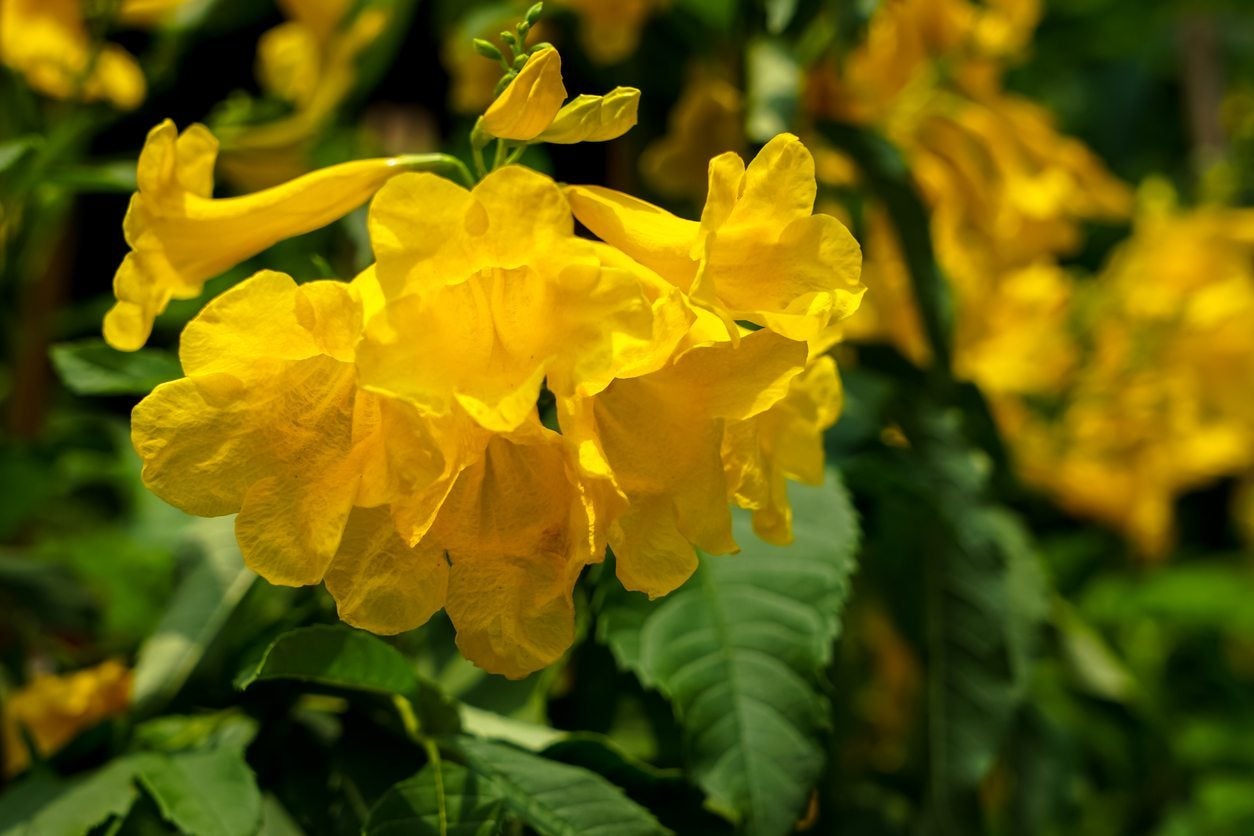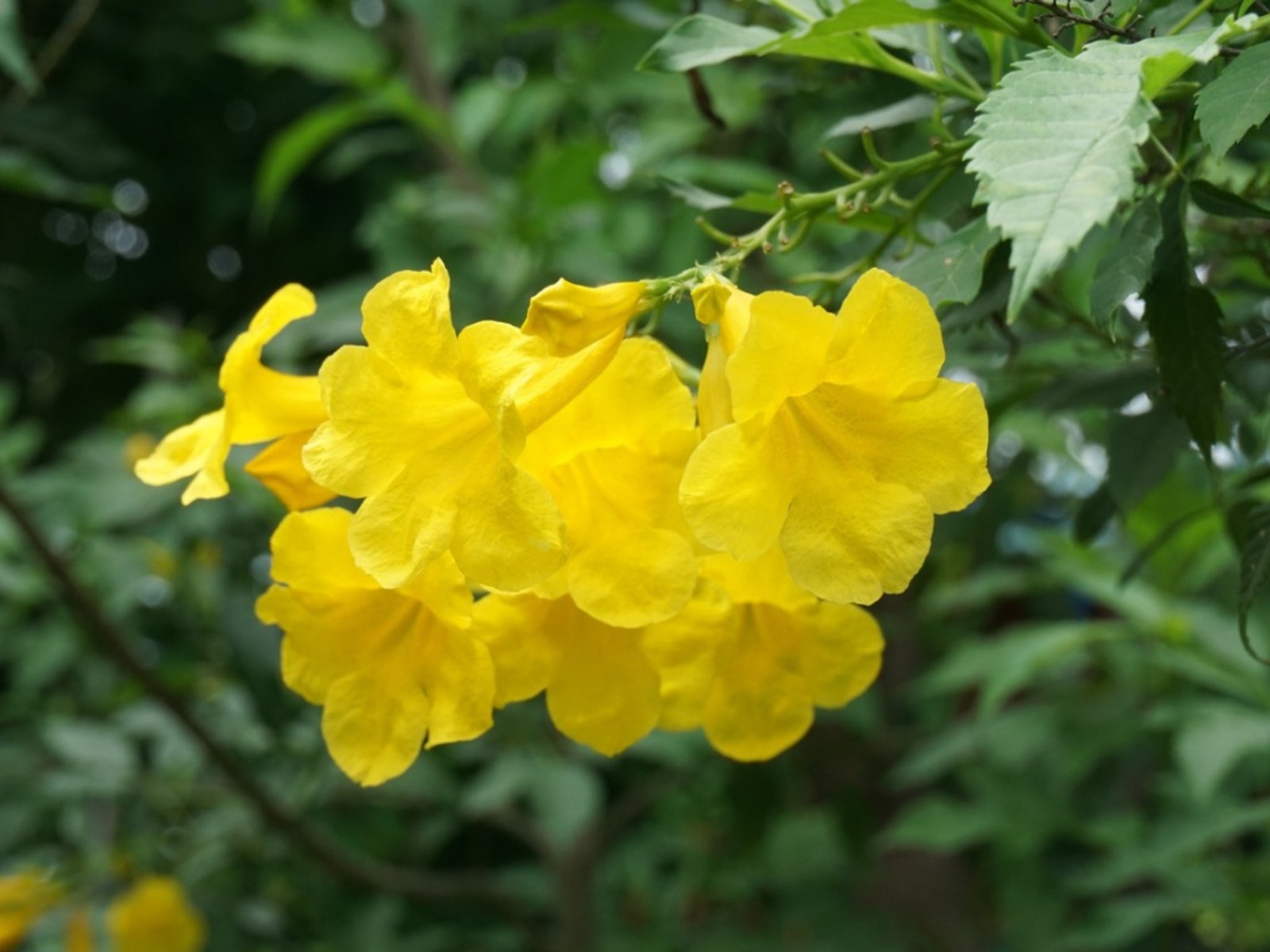Planting Esperanza: Tips For How To Grow The Esperanza Plant


Esperanza (Tecoma stans) goes by many names. The esperanza plant may be known as yellow bells, hardy yellow trumpet, or yellow alder. Regardless of what you call it, the tropical native is easily recognized by its large masses of lightly scented, golden-yellow, trumpet-shaped flowers amid the dark green foliage.
These can be seen blooming from spring through fall. While esperanza perennials are grown in the landscape as shrubs or container plants for their beauty, they were once quite popular for their medicinal use as well—including a beer that was made from the roots.
Esperanza Growing Conditions
Esperanza plants need to be grown in warm conditions that closely mimic that of their native environments. In other areas they are usually grown in container where they can be overwintered indoors. While esperanza plants can tolerate a wide range of soil conditions, it's preferable that they be given fertile, well-draining soil.
Therefore, any poor soil should be amended with organic matter (i.e. compost) to improve its overall health and drainage. Part of esperanza growing conditions also requires that it be planted in full sun; however, afternoon shade is suitable as well.
Planting Esperanza
Many people choose to add in some slow-release fertilizer as they amend the soil prior to planting esperanza. They are usually planted in mid-spring, long after any threat of frost has ceased. The planting hole should be about two to three times the size of the root ball (when planted outdoors) and just as deep as the pots they were grown in.
Allow at least three to four feet spacing between multiple plants. When planning esperanza seeds (two per pot) may be planted about an eighth of an inch (2.5 cm.) deep and misted with water. They should germinate within two to three weeks.
Esperanza Care
Esperanza care is easy. Since these are relatively low-maintenance plants once established, esperanza care is minimal and not too difficult. They require watering at least once a week, especially during hot weather. Container grown plants may need additional watering.
Gardening tips, videos, info and more delivered right to your inbox!
Sign up for the Gardening Know How newsletter today and receive a free copy of our e-book "How to Grow Delicious Tomatoes".
The soil should dry out some between watering intervals. Also, a water-soluble fertilizer should be given at least every two weeks for container-grown plants, and about every four to six weeks for those planted in the ground. Cutting the seedpods on the esperanza plant will help promote continuous bloom.
In addition, pruning may be necessary each spring to maintain both size and appearance. Cut off any leggy, old, or weak growth. These plants are easy to propagate as well, either by seed or through cuttings.

Nikki Tilley has been gardening for nearly three decades. The former Senior Editor and Archivist of Gardening Know How, Nikki has also authored six gardening books.
-
 4 Superfast Composting Methods: Turn Waste Into Garden Gold In 30 Days Or Less
4 Superfast Composting Methods: Turn Waste Into Garden Gold In 30 Days Or LessTry the fastest composting methods to turbocharge your pile and transform kitchen scraps and garden waste into finished compost in just a few weeks.
By Mary Ellen Ellis
-
 Best Spider Plant Soil – Complete Soil Guide And Expert Tips For Keeping Plants Happy
Best Spider Plant Soil – Complete Soil Guide And Expert Tips For Keeping Plants HappySpider plants are fun and easy plants to grow, but what is the best soil for a spider plant? Selecting the right soil is important so they can thrive.
By Bonnie L. Grant
-
 Pruning Esperanza Plants – How To Prune An Esperanza Plant
Pruning Esperanza Plants – How To Prune An Esperanza PlantEsperanza is a flowering shrub that produces bright yellow flowers all summer long and sometimes beyond. Learn more esperanza pruning information, including how and when to prune esperanza plants in this article so you can enjoy the plants even more.
By Liz Baessler
-
 Why Esperanza Does Not Bloom: What To Do For Esperanza Plant Not Flowering
Why Esperanza Does Not Bloom: What To Do For Esperanza Plant Not FloweringYou may be growing esperanza, but what if your plant does not bloom at all? Find out reasons for esperanza not blooming and tips on how to get blooms on esperanza plants in this article.
By Susan Patterson